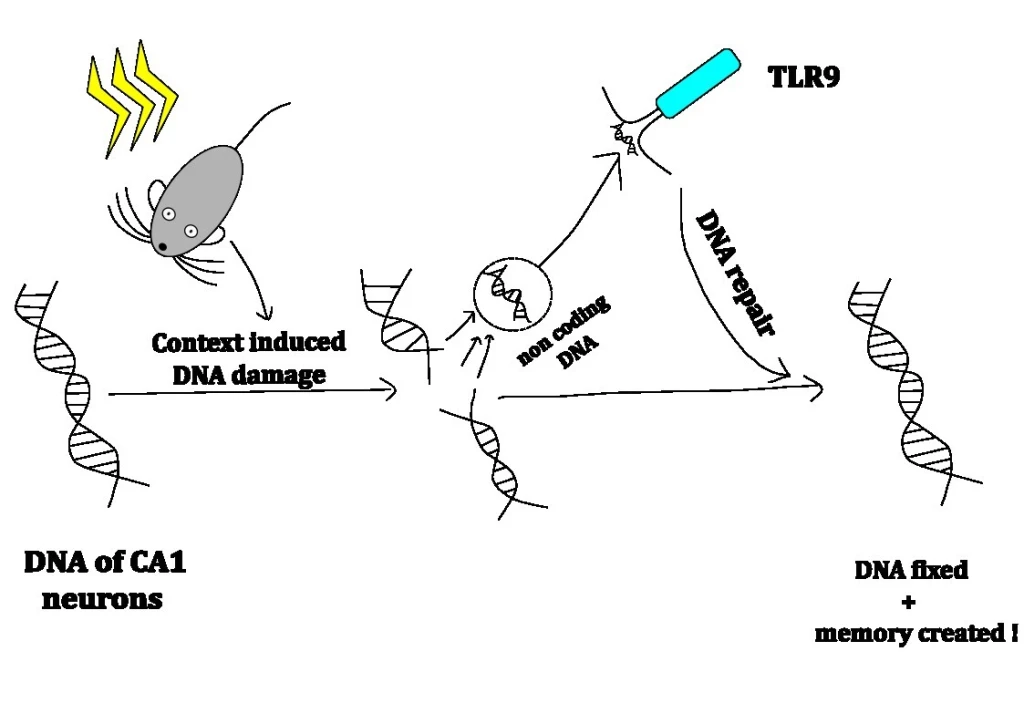Created with BioRender.com
In the public discussion of microbes, there is often a negative connotation attached to microbes such as bacteria, viruses, fungi, and parasites due to the presence of pathogenic individuals in each category. However, microbes are not synonymous with pathogens. For instance, some gut bacteria are well-acknowledged for their importance in the nutrient absorption of their hosts.
Pathogens are notorious because they often acquire nutrients at the expense of their hosts. However, recent epidemiological observations call for a re-evaluation of some parasites, specifically parasitic worms known as helminths. With the reduction in helminth infection cases, epidemiologists have seen an uptick in autoimmune and inflammatory disorders in industrialized society. Among these observations stands out an unexpected duo- the correlation between helminth infections in the intestine and the reduced inflammatory disorders of the skin.
Intrigued by the intestinal worm-skin disorders connection, Classon and colleagues investigated the correlation experimentally using Heligmosomoides polygyrus bakerii (H. polygyrus) in a mouse model of intestinal helminth infection. H. polygyrus is a naturally occurring intestinal helminth in mice that can grow up to 10-20mm in length. Upon infection with intestinal helminths, the immune system is known to skew towards a T helper cell type 2 (TH2) response. The TH2 cells are known to specialize in combating parasites but have also been suspected to impair immune responses to other types of pathogens.
To evaluate the immune response of helminth-infected mice, Classon and colleagues exposed the ear skin of these mice to dead mycobacterium tuberculosis (Mtb), the bacteria that cause tuberculosis. Although the immune system recognizes both H. polygyrus and Mtb as foreign intruders, they require vastly different defense strategies. As a bacterium, Mtb is approximately 1/10000 the size of H. polygyrus, this makes them susceptible to getting gulped up by phagocytes- mediated by the molecule IFN-γ. On the other hand, helminths like H. polygyrus are too large to be engulfed by immune cells. The anti-parasitic responses by host immune cells involve the release of toxic chemicals and physical expulsion of the parasites.
Indeed, helminth-infected mice had a lower IFN-γ level in their ears compared to their uninfected counterpart after the dead Mtb exposure. The researchers discovered that helminth-infected mice have higher total helper T cells in their ears. However, TH1 cells- the source of the IFN-γ- was similar between these two mouse groups. This suggested that the reduced IFN-γ in helminth-infected mice was probably due to dampened activation rather than reduction in number of TH1 cells.
The link between helminth infection in the intestine and the elevated helper T cells in the distant skin was unexpected. A plausible explanation is that the helminth infection makes the intestinal barrier leakier, thereby allowing gut bacteria to enter the bloodstream. Therefore, the researchers suspected that these invading bacteria caused the helper T cell accumulation in the skin. They investigated this suspicion using a drug-induced intestinal inflammation that also increased intestinal leakiness to bacteria. However, they found no elevation in helper T cells at the ear skin. Ergo, their hypothesis that the gut bacteria enter the bloodstream and causes modifications in skin immunity was not true.
Could the increased helper T cell numbers in the skin actually be caused by the helminths all the way in the intestine? The researchers interrogated this question by characterizing the helper T cells that are leaving the intestine of helminth-infected mice. They discovered that these T cells have elevated skin-homing receptors, CCR4 and CCR10, which affirmed their suspicion of the gut-skin connection.
Naturally, the researchers were interested in investigating the function of these helminth-induced helper T cells that reached the skin. They determined that the newly recruited helper T cells were predominantly helminth specific TH2 cells. Interestingly, these TH2 cells persist in the skin even 4 weeks after the researchers deworm the mice.
The researchers then wondered whether there is an advantage to having these helminth-specific T cells in the skin. When researchers introduced H. polygyrus antigen to the skin of H. polygyrus-infected mice, they observed swelling in the local skin. This indicated that the local T cells were mounting an immune response. On the other hand, when these mice were exposed to the antigen from a different worm species, no reaction occurred. Unfortunately, this meant that these T cells are highly specific to the intestinal helminth and do not confer broad protection against different parasites. Interestingly, TH2 skewing in the skin of helminth-infected mice did appear to have persisting impairment of the IFN-γ response. Even 10 weeks after deworming, helminth-infected mice continued to produce lower IFN-γ after skin exposure to dead Mtb. Does this research pioneer a whole different plethora of helminth-mediated immune signaling of the host or does this again bolster the helminth-autoimmunity/ skin inflammation link?
Although the research team has not discovered a clear advantage of these helminth-specific TH2 cells in the skin, their discovery of the gut-skin linkage may offer a new perspective on the origin of some skin disorders.
Source:

Article author: YongGuang Jiang. Yong is an IRTA postbaccalaureate fellow at the National Institute of Health. His research is focused on studying the role of plasmin and neutrophil elastase in hematopoietic recovery.
Editor: Sutonuka Bhar. Sutonuka is a PhD candidate at the University of Florida. Her work focuses on host immune responses against viruses and bacterial membrane vesicles.
Check out Antibuddies’ blog post “An Unexpected Linkage: The Gut-Skin Axis”.
Tweet






Leave a comment